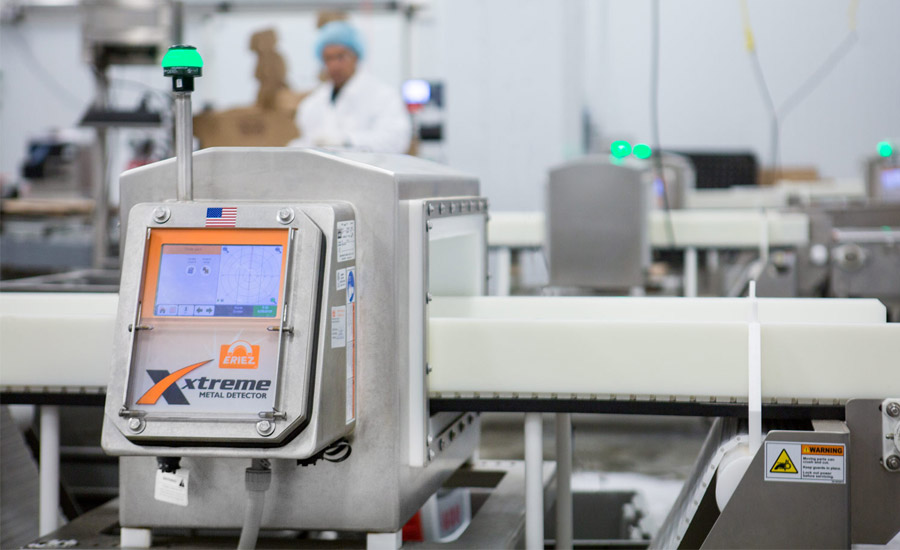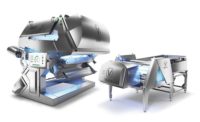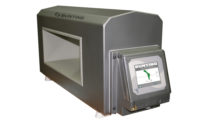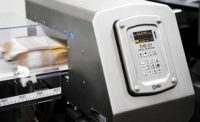The latest X-ray, metal detection, checkweighing, and vision systems feature multi-scanning capabilities, machine connectivity, and improved operator learning tools. These upgrades allow the equipment to better detect small foreign objects, reduce false rejects, and handle a wide range of products to ensure maximum food safety. Bakery and snack producers use inspection and detection equipment to improve their quality control and food safety programs.
Greater product variety and consumer attention to quality and safety are key factors driving the development of inspection and detection equipment. Meeting these changing demands has prompted Bunting, Newton, KS, to design its triple-frequency metal detector, which allows the operator to process a wide range of items. “For example, the machine allows you to switch from processing fresh items to frozen items at the push of a button. It also features automatic product learning and stores settings for up to 500 products,” says Barry Voorhees, metal detection product manager.
More metal detectors can connect to information systems in smart production facilities that employ fewer people. In fact, today’s inspection and detection equipment can monitor activity and provide feedback about equipment performance while also providing data for electronic records. “This information is vital for streamlining supplier audits and warning plant managers of potential equipment failures,” says Ray Spurgeon, metal detection product manager, Eriez, Erie, PA.
Advanced detection
The latest metal detectors use multiple frequencies and quick-learning features to improve performance. The Sentinel 1000 Selectscan metal detector, from Thermo Fisher Scientific, Waltham, MA, enables the user to select the ideal frequency to detect ferrous, non-ferrous, and stainless steel foreign objects. Autolearn software guides the user through product setup. “Using an intuitive, on-screen wizard, the user can complete setup in minutes. The result is an operating frequency capable of detecting the smallest metal contaminants tailored to a specific application,” says Alex Kinne, applications engineer.
Bunting has developed an Automatic Protocol Export, which allows its metal detectors to download events automatically by logging on to a specified location on the customer’s network server. It has a variety of event triggers—by batch, product, daily, or weekly. “Depending on which triggers are selected, the download occurs automatically. This allows personnel to review all events from any network-connected device,” Voorhees says.
With its partner, CEIA, Heat and Control, Hayward, CA, recently introduced the THS/MS21 multi-spectrum metal detector, with optional USDA-certified construction. It utilizes a wide spectrum of frequencies, thus eliminating false rejects caused by product effect without having to reduce metal detection sensitivity. Autolearn software scans products in a single pass to reduce setup time and inspection errors. Bluetooth connectivity eliminates the need to access the detector’s interior for programming and data collection; Ethernet connection also is available.
“CEIA builds THS/21 metal detectors with horizontal apertures for conveyor applications and round apertures for drop-through products. The metal detectors also are available in pre-assembled systems, complete with conveyor, controls, and an ejection device for conveyed, falling, and pumped products,” says Todd Grube, product manager, inspection systems, Heat and Control.
Fortress Technology Inc., Toronto, offers the Interceptor DF metal detector, which uses multiple coil sets to drive the electromagnetic fields in different directions, looking for signals over a broad spectrum, from multiple angles. “The stronger disturbance from one field compensates for the weaker signal from another. This increases the probability of identifying and rejecting products containing non-spherical metals, including difficult-to-spot flat metal flakes,” says Pierre DiGirolamo, director.
Eriez now offers 6- and 18-inch belt sizes for its Xtreme Metal Detector conveyor systems with automatic rejects. They are designed with push arm or air blast rejects, lockbox, reject confirmation, stainless steel motor/reducer, improved guarding, emergency stop, and side guides. An icon-driven interface is patterned after cell phones. “In practice, this means operators receive instantaneous visual feedback in real-time to help make decisions regarding the equipment’s set-up and performance,” Spurgeon says.
X-ray technologies
X-ray inspection and metal detection are complementary technologies that minimize the risk of contaminants going undetected. It’s common to have both types of equipment within a food processing facility. “For example, an X-ray system could be used to inspect incoming raw ingredients for stone contamination. Further downstream, there may be increased risk of metal contamination coming off the processing equipment. At this point, a metal detector would be the appropriate detection technology to use,” says Kinne.
Mettler Toledo Product Inspection, Lutz, FL, works with bakery and snack producers to identify the right configuration of machine core components to meet their detection needs. “For example, a box of snacks being conveyed standing up warrants an X-ray system equipped with a side beam versus a box of snacks being conveyed laying down, which warrants a vertical beam. The goal—to optimize the software’s ability to separate contaminants from the product—is always to go through the shortest dimension of the product being inspected,” says Lanel Menezes, business manager, X-ray.
Mettler Toledo Product Inspection recently introduced the X34 X-ray system, which uses optimum power generators with Autolearn software to optimize the generator power based on the product being inspected. Thus, a novice X-ray user can set up an X34 system in minutes by passing a sample product through the system, then following user instructions on-screen. Bakery and snack products require low levels of power, and the use of OPG results in even lower power consumption, the company reports.
“Technological advances built into this and the companion X36 X-ray system have improved in leaps and bounds in terms of leveraging inspection capability while maximizing ease-of-use and minimizing power requirements. In contrast, traditional X-ray systems required manual adjustment of the X-ray tube power, based on the product,” Menezes explains.
Combination systems represent another industry trend. Fortress Technology recently unveiled the Raptor “smart” weigher series, which comprise three systems: a single-frame standalone checkweigher, a combination checkweigher and metal detector, and a case weighing system for ingredient and big bag applications, such as flour and grains. The checkweighers include an intelligent conveyor removal system. “This series addresses the need for accurate, hygienic, and compact food weight control systems that incorporate digital processing technology. By capturing sample readings of individual packs by the millisecond, the Raptor control system provides accurate and consistent weighing results,” DiGirolamo says.
Vision systems
New high-definition cameras also are improving inspection and detection capabilities. For example, EyePro System USA Inc., Chicago, has introduced the Multi-Eye system, which integrates hyperspectral imaging technology for advanced foreign body detection and classification (on product surfaces) with product composition and moisture distribution analysis. “Using a combination of spectroscopy and imaging technology, the system acquires images of products at different wavelengths and provides information to detect foreign bodies and classify them,” says Marco Aste, technical product specialist.
Cognex Corp., Natick, MA, recently introduced the In-Sight D900 embedded vision system, which features deep learning software inside an industrial-grade smart camera. It is designed to solve a broad range of complex, in-line inspection applications, including optical character recognition, assembly verification, and defect detection. By combining the self-learning ability of a human inspector with the consistency of a vision system, the In-Sight D900 expands the limits of what can be inspected in food processing automation, the company reports. The system can be set up using a few image samples.
Digital sorting
Key Technology, Walla Walla, WA, has introduced VERYX BioPrint, a digital sorter that can integrate sensor information from a near infrared, hyperspectral image with information from high-resolution color cameras. “We refer to this feature as pixel fusion. The combination of these two inspection technologies gives bakery and snack plants the ability to know everything there is to know about every object flowing through the processing line,” says Marco Azzaretti, director of marketing.
Azzaretti predicts that such technology is poised to unlock more opportunities in the future, including improved identification of internal defects and other conditions that are not discernible by inspecting exterior surfaces. “One of the biggest trends that we see in digital sorting involves using the sorter as a data center. A processor can collect and analyze data about the sorting process and every object flowing through the sorter. This information can reveal trends that can be acted upon to optimize processes upstream and downstream of the sorter.”




